Cuicuilco › Cuneiform › The Olive in the Ancient Mediterranean » Origins and History
Articles and Definitions › Contents
- Cuicuilco › Origins
- Cuneiform › Origins
- The Olive in the Ancient Mediterranean › Origins
Ancient civilizations › Historical places, and their characters
Cuicuilco › Origins
Definition and Origins

Cuicuilco is an ancient settlement site in central Mexico, now located in southern Mexico City. Prominent in the late pre-Classic period, around 500 BCE, it is noted for its large circular temple mound, one of the earliest monumental structures in ancient Mesoamerica and influential on many later pyramid monuments built by the Maya and Aztecs amongst others. Buried in several metres of lava and abandoned Cuicuilco remains one of the most enigmatic early urban centres in the Americas.
A LARGE URBAN CENTRE
Cuicuilco was inhabited just at the period when Mesoamerican villages were transforming into larger population centres which would in turn become the great cities of the region in later centuries. At its height the town may have had a population of up to 20,000 people, its prosperity based on the fertile land in the surrounding lagoon basin of the Mexico Valley. Several small platform structures, houses, and plazas have been excavated at the site, which is estimated to have covered 400 ha (1,000 acres), demonstrating that it was one of the first large settlements in Mesoamerica.
THE TEMPLE PYRAMID
The site of Cuicuilco is dominated today by the massive circular temple pyramid or mound. The structure was constructed sometime in the 5th century BCE (confirmed by radio-carbon dating). The earth, sand, and rubble mound is 135 metres (443 feet) in diameter at its base and 23 metres (75 feet) high. The total volume of the temple is 60,000 cubic metres (2 million cubic feet). It has four levels with inwardly sloping sides which decrease in size. The four levels were each faced with volcanic stone rocks and slabs fixed in place using a clay mortar. The construction of the temple mound was in two separate stages.First, two levels were built with a temple on the top level. This was likely an attempt to secure a dry and permanent platform above the floodplains below. In a second building programme, the mound was enlarged by adding another two higher levels, again with a temple on the top level.
CUICUILCO, WITH A POPULATION OF 20,000, WAS THE FIRST LARGE SETTLEMENT IN MESOAMERICA.
The stone altar found by archaeologists on top of the pyramid was originally housed in a dual temple structure with a cone roof. Adding an extra four metres to the already impressive height of the temple, this structure was aligned with the sun on the equinox. The altar bears traces of red pigment (cinnabar), suggesting its purpose was for sacrifices in religious ceremonies.Excavated next to this altar was a ceramic figurine, dating to c. 300 BCE, representing an old man carrying a brazier on his back. The historian RE Townsend suggests this may indicate rituals at the altar involved fire. In later Mesoamerican cultures we know that priests were responsible for maintaining temple fires.
The top of the temple was accessed via a ramp and three flights of monumental staircases on the east side while the west side had four flights of steps. The circular form of the mound is very similar to later Huastec and Tarascan structures, and the layered monument with stairways is an early form of the large temple pyramids which would dominate such Mesoamerican sites as Teotihuacan, the great Maya cities, and the Aztec capital Tenochtitlan.

Cuicuilco
To the side of the temple mound are burial sites. Their excavation has revealed pottery, incense burners, and clay figurines of local manufacture. The figurines are typical of Mesoamerican art of all periods and represent human figures, animals, and birds. Standing females are the most common type, with details such as mouth and oval eyes deeply incised with a single line.
DESTRUCTION
Cuicuilco was devastated by a lava flow from the nearby Xitli volcano at the end of the pre-Classic period, perhaps around 200 BCE. Around 150 years later (or perhaps even c. 100 CE) there was another eruption and Cuicuilco was definitively abandoned leaving its neighbor Teotihuacan to dominate the region for the next 500 years. If the later date is accepted for the second eruption, then it is likely that more powerful Teotihuacan had already taken over Cuicuilco. The flow covered both the temple mound and the site's burial grounds in up to seven metres of lava making excavation impractical in most places.Nevertheless, parts of the site were excavated and its temple mound rediscovered in the 1920s CE.
Cuneiform › Origins
Definition and Origins
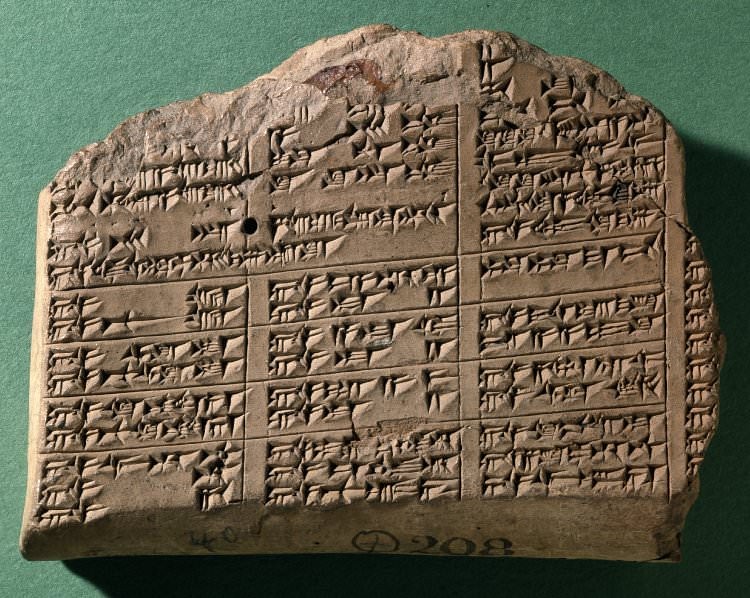
Cuneiform is a system of writing first developed by the ancient Sumerians of Mesopotamia c. 3500-3000 BCE. It is considered the most significant among the many cultural contributions of the Sumerians and the greatest among those of the Sumerian city of Uruk which advanced the writing of cuneiform c. 3200 BCE.
The name comes from the Latin word cuneus for 'wedge' owing to the wedge-shaped style of writing. In cuneiform, a carefully cut writing implement known as a stylus is pressed into soft clay to produce wedge-like impressions that represent word-signs (pictographs) and, later, phonograms or `word-concepts' (closer to a modern-day understanding of a `word'). All of the great Mesopotamian civilizations used cuneiform until it was abandoned in favour of the alphabetic script at some point after 100 BCE, including:
- Sumerians
- Akkadians
- Babylonians
- Elamites
- Hatti
- Hittites
- Assyrians
- Hurrians
When the ancient cuneiform tablets of Mesopotamia were discovered and deciphered in the late 19th century CE, they would literally transform human understanding of history. Prior to their discovery, the Bible was considered the oldest and most authoritative book in the world. The brilliant scholar and translator George Smith (1840-1876 CE) changed the understanding of history with his translation of The Epic of Gilgamesh in 1872 CE. This translation allowed other cuneiform tablets to be interpreted which overturned the traditional understanding of the biblical version of history and made room for scholarly, objective explorations of history to move forward.
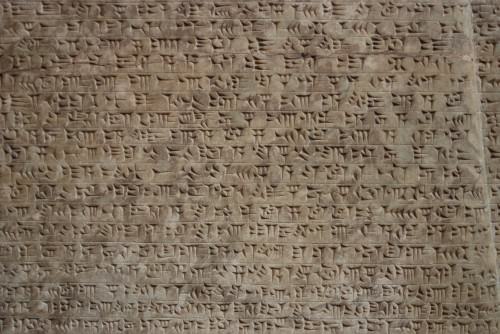
Cuneiform Writing
EARLY CUNEIFORM
The earliest cuneiform tablets, known as proto-cuneiform, were pictorial, as the subjects they addressed were more concrete and visible (a king, a battle, a flood) but developed in complexity as the subject matter became more intangible (the will of the gods, the quest for immortality). By 3000 BCE the representations were more simplified and the strokes of the stylus conveyed word-concepts (honour) rather than word-signs (an honourable man). The written language was further refined through the rebus which isolated the phonetic value of a certain sign so as to express grammatical relationships and syntax to determine meaning. In clarifying this, the scholar Ira Spar writes:
This new way of interpreting signs is called the rebus principle. Only a few examples of its use exist in the earliest stages of cuneiform from between 3200 and 3000 BC The consistent use of this type of phonetic writing only becomes apparent after 2600 BC It constitutes the beginning of a true writing system characterized by a complex combination of word-signs and phonograms—signs for vowels and syllables—that allowed the scribe to express ideas. By the middle of the Third Millennium BC, cuneiform primarily written on clay tablets was used for a vast array of economic, religious, political, literary, and scholarly documents. (1)
THE GREAT LITERARY WORKS OF MESOPOTAMIA SUCH AS THE FAMOUS EPIC OF GILGAMESH WERE ALL WRITTEN IN CUNEIFORM.
DEVELOPMENT OF CUNEIFORM
One no longer had to struggle with the meaning of a pictograph; one now read a word-concept which more clearly conveyed the meaning of the writer. The number of characters used in writing was also reduced from over 1,000 to 600 in order to simplify and clarify the written word. The best example of this is given by the historian Paul Kriwaczek who notes that, in the time of proto-cuneiform:
All that had been devised thus far was a technique for noting down things, items and objects, not a writing system. A record of `Two Sheep Temple God Inanna ' tells us nothing about whether the sheep are being delivered to, or received from, the temple, whether they are carcasses, beasts on the hoof, or anything else about them. (63)
Cuneiform developed to the point where it could be made clear, to use Kriwaczek's example, whether the sheep were coming or going to the temple, for what purpose, and whether they were living or dead. By the time of the priestess-poet Enheduanna(2285-2250 BCE), who wrote her famous hymns to Inanna in the Sumerian city of Ur, cuneiform was sophisticated enough to convey emotional states such as love and adoration, betrayal and fear, longing and hope, as well as the precise reasons behind the writer experiencing such states.

Inscribed Stand Head
CUNEIFORM LITERATURE
The great literary works of Mesopotamia such as the Atrahasis, The Descent of Inanna, The Myth of Etana, The Enuma Elish and the famous Epic of Gilgamesh were all written in cuneiform and were completely unknown until the mid 19th century CE, when men like George Smith and Henry Rawlinson (1810-1895 CE) deciphered the language and translated it into English.
Rawlinson's translations of Mesopotamian texts were first presented to the Royal Asiatic Society of London in 1837 CE and again in 1839 CE. In 1846 CE he worked with the archaeologist Austin Henry Layard in his excavation of Nineveh and was responsible for the earliest translations from the library of Ashurbanipal discovered at that site. George Smith was responsible for deciphering The Epic of Gilgamesh and in 1872 CE, famously, the Mesopotamian version of the Flood Story, which until then was thought to be original to the biblical Book of Genesis.
MANY BIBLICAL TEXTS WERE THOUGHT TO BE ORIGINAL WORKS UNTIL CUNEIFORM WAS DECIPHERED.
Many biblical texts were thought to be original until cuneiform was deciphered. The Fall of Man and the Great Flood were understood as literal events in human history dictated by God to the author (or authors) of Genesis but were now recognized as Mesopotamian myths which Hebrew scribes had embellished on in The Myth of Etana and the Atrahasis. The biblical story of the Garden of Eden could now be understood as a myth derived from The Enuma Elish and other Mesopotamian works.The Book of Job, far from being an actual historical account of an individual's unjust suffering, could now be recognized as a literary piece belonging to a Mesopotamian tradition following the discovery of the earlier Ludlul-Bel-Nimeqi text which relates a similar story.
The concept of a dying and reviving god who goes down into the underworld and then returns, presented as a novel concept in the gospels of the New Testament, was now understood as an ancient paradigm first expressed in Mesopotamian literature in the poem The Descent of Inanna. The very model of many of the narratives of the Bible, including the gospels, could now be read in light of the discovery of Mesopotamian Naru Literature which took a figure from history and embellished upon his achievements in order to relay an important moral and cultural message.
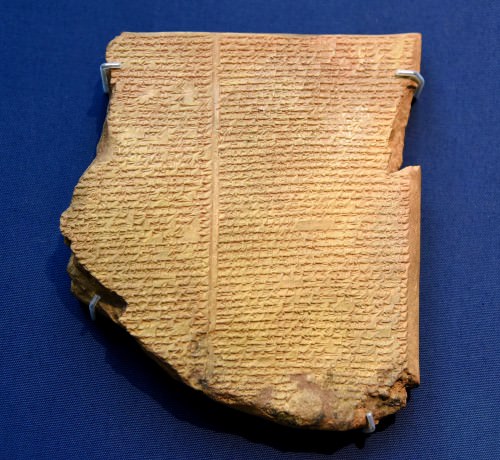
Flood Tablet of the Epic of Gilgamesh
Prior to this time, as noted, the Bible was considered the oldest book in the world, the Song of Solomon was thought to be the oldest love poem; but all of that changed with the discovery and decipherment of cuneiform. The oldest love poem in the world is now recognized as The Love Song of Shu-Sin dated to 2000 BCE, long before The Song of Solomon was written. These advances in understanding were all made by the 19th century CE archaeologists and scholars sent to Mesopotamia to substantiate biblical stories through physical evidence.
Along with other Assyriologists (among them, TG Pinches and Edwin Norris), Rawlinson spearheaded the development of Mesopotamian language studies, and his Cuneiform Inscriptions of Ancient Babylon and Assyria, along with his other works, became the standard reference on the subject following their publication in the 1860's CE and remain respected scholarly works into the modern day.
George Smith, regarded as an intellect of the first rank, died on a field expedition to Nineveh in 1876 CE at the age of 36. Smith, a self-taught translator of cuneiform, made his first contributions to deciphering the ancient writing in his early twenties, and his death at such a young age has long been regarded a significant loss to the advancement in translations of cuneiform in the 19th century CE.
The literature of Mesopotamia informed all the written works which came after. Mesopotamian motifs can be detected in the works of Egyptian, Greek, and Roman works and still resonate in the present day through the biblical narratives which they inform. When George Smith deciphered cuneiform he dramatically changed the way human beings would understand their history.
The accepted version of the creation of the world, original sin, and many of the other precepts by which people had been living their lives were all challenged by the revelation of Mesopotamian - largely Sumerian - literature. Since the discovery and decipherment of cuneiform, the history of civilization has never been the same.
The Olive in the Ancient Mediterranean › Origins
Ancient Civilizations
Olives and olive oil were not only an important component of the ancient Mediterranean diet but also one of the most successful industries in antiquity. Cultivation of the olive spread with Phoenician and Greek colonization from Asia Minor to Iberia and North Africa and fine olive oil became a great trading commodity right through to the Roman period and beyond.The olive also came to have a wider cultural significance, most famously as a branch of peace and as the victor's crown in the ancient Olympic Games.
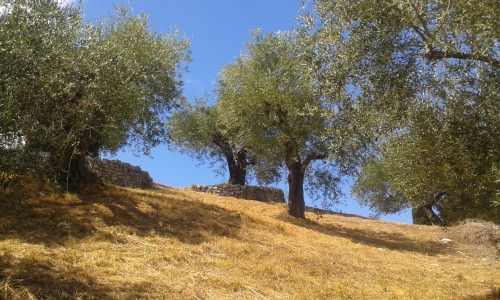
Olive Grove
GEOGRAPHICAL SPREAD
The olive was first cultivated around 5000 BCE, or even earlier, on the Carmel coast of ancient Israel. Here simple olive presses have been excavated at the Neolithic site of Kfar Samir. The success of the industry is attested by records of olive oil exports to Greece and Egypt throughout the 3rd millennium BCE. Greece started to produce its own olives on Minoan Creteand Cyprus in the Late Bronze Age and, thereafter, on the mainland. The Greeks, like the peoples of the Levant, were soon producing a surplus of olives and olive oil so that they built up a lucrative export industry. Such was its importance that it was the only permissible export in the celebrated laws created by Solon (c. 640 – c. 560 BCE). With the process of Phoenician and Greek colonization olive trees ( Olea europea ) sprang up across the ancient Mediterranean where all that was needed was warm summers and relatively light rainfall for these hardy trees to thrive.
THE ATHENIANS CONSIDERED THE OLIVE TREE A GIFT FROM THEIR PATRON GODDESS ATHENA.
Trees were spread to new areas by planting cuttings and ovules (trunk growths), or grafting domesticated trees onto wild ones.The Romans planted their cuttings in dedicated nursery beds to help them on their way. Long-lived and drought-resistant, the tree was a handily low-maintenance form of farming. Olive growers usually planted their trees in amongst fruit trees and reared animals so as to have some income in case of an olive crop failure, and it was an easy way to keep groves grass and weed free. The residue from pressing oil from olives could also be used as feed, especially for pigs.
From the 1st to 3rd centuries CE the Romans spread olive cultivation to more marginal growing areas such as central Tunisia and western Libya, which required extensive irrigation systems to make the farming viable. The Romans' dependency on olive oil is illustrated by Septimius Severus ' decision to collect it as part of the taxes imposed on provinces and then redistribute it to the populace of Rome. As the Roman Empire expanded, so too did demand for olive oil, with Constantinople becoming one of the biggest importers. Indeed, the establishment of a huge number of olive farms (and vineyards) across Syria and Cilicia to meet this demand are credited with creating a regional economic boom in the 3rd-5th centuries CE.
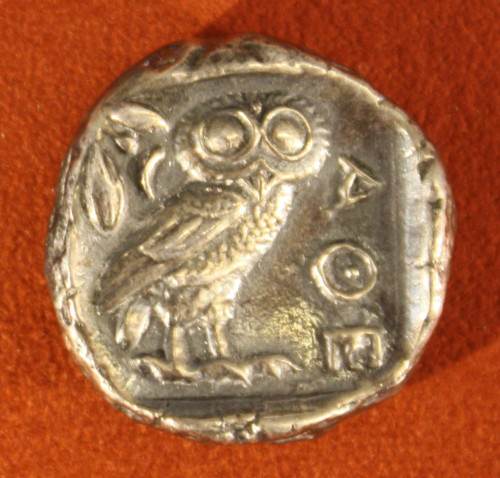
Athenian Silver Tertradrachm
The largest olive producers in the ancient world then were Greece, Italy, the Levant, the north coast of Africa, Spain, and Syria. Places which enjoyed a particularly high reputation in antiquity for fine quality oil included Attica, Baetica (in Spain), Cyrenaica (Libya), Samos, and Venafrum (Italy).
PRODUCTION
Table-olives (made edible by salting) were eaten, but most of the crops produced went into making oil. Although oil was a common product, it was not necessarily a cheap one and, as with wine, there were different grades of quality. Olive trees produce a full harvest only every other year, sometime from October to December, and the Greeks believed that the earlier they were harvested (when still green) and pressed, the finer the oil. However, leaving collection later in the season allows for the olives to continue growing, ripen so that they become black, and so more oil can be pressed from them. The finest quality oil, as today, came from the first pressing and when the mash had the minimum number of stones in it.

Trapetum Roman Olive Press
Olives were crushed either underfoot (the crusher wearing wooden sandals), with pestle and mortar, using a stone roller, or in presses, the first mechanical ones coming from Klazomenai in Turkey. Dating to the 6th century BCE, these used a beam anchored to a wall and a stone weight to increase the pressure and efficiency of the press. The earliest known presses in Greece come from Olynthos. Several examples have been excavated which used circular millstones to crush the olives. One of the best-preserved olive presses comes from Hellenistic Argilos in northern Greece. As the machine evolved, a winch was added to bring down the beam with greater force.
As with most areas of everyday life, the Romans went one step further and made oil on a much larger scale. Large estates are described in detail by such authors as Cato. The Roman writer describes in his De agricultura the annual yield of one producer as between 50,000 and 100,000 litres of oil. The Romans first used a circular stone press ( trapetum ) which consisted of a large stone bowl ( mortarium ) into which the olives were poured and then crushed under two concave stones ( orbes ) attached to a central beam ( cupa ) fixed to an iron pivot ( columella ). This apparatus then slotted onto a central post ( miliarium ) set into the bowl which allowed the stones to be turned inside it. These rotary stone mills often harnessed animal power using mules to further increase efficiency. The Romans also moved on from the traditional beam and winch press to screw presses which dramatically increased the crushing pressure. This helped meet the ever-growing demand for olive oil as the empire expanded and resulted in production quantities not seen again until the 19th century CE.
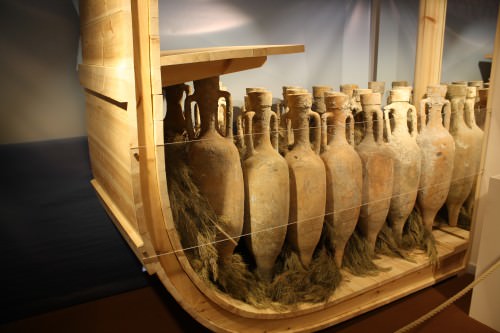
Amphorae Packed for Transportation
Once pressed, the oil was drained off into a large stone settling tank set in the floor of the press room. Here the liquid mix of water, olive juice, and oil would settle and the oil rose to the surface where it could be skimmed off using a ladle or, alternatively, a tap in the base of the tank could be opened to drain away the water. When ready the finished oil was then stored in terracotta containers. At a pressing workshop on Delos six large pithoi vases held up to 4,000 litres of oil. There are records that oil produced in North Africa was shipped to Rome in oilskins. The most common storage vessel, though, was the amphora. These were very often stamped with such information as the producer's mark, place of manufacture, or production date, and then, if not used locally, were shipped across the Mediterranean.
USES
Not only were olives and olive oil an important part of the Mediterranean diet and cooking process (and still are, of course) but the oil produced from pressed olives was also used for many other purposes. Greeks and Romans used it to clean their bodies after exercise – smearing it on so that it collected dirt and sweat and then scraping it off using a metal instrument called a strigil. Olive oil was used as a fuel in terracotta (and more rarely metal) lamps, as an ingredient of perfumes, in religious rituals, for massages, as a multi-purpose lubricant, and even prescribed as a medicine.
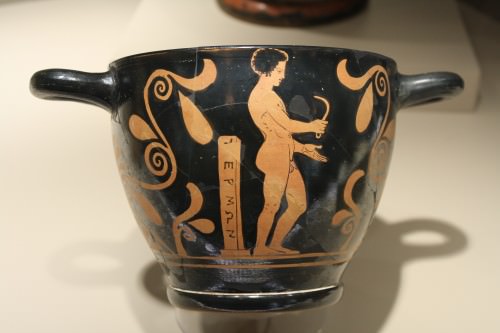
Greek Athlete With Strigil
IMPACT ON CULTURE
The importance of the olive to Greek culture is seen in the appearance of the olive branch on Classical Athenian coins and its use in the crowns of victory at the Olympic Games. The Athenians considered the olive tree a gift from their patron goddess Athena, and this very tree grew on the acropolis of the city. They had an entire sacred grove of olive trees ( moriae ) too, from which oil was pressed and placed into uniquely decorated amphora vases to be given as prizes in the annual Panathenaic festival.
Olive branches came to signify peace. Herodotus tells us that in the early 5th century BCE Aristagoras of Miletus carried one when he went to negotiate help from Cleomenes during the Ionian Revolt against Persia so that he would not be turned away from the Spartan king. Olive branches were also carried by pilgrims who visited the sacred oracle of Apollo at Delphi. The Romans continued this association and often depicted the god Mars, in his lesser-known guise as the bringer of peace, carrying an olive branch.
LICENSE
Article based on information obtained from these sources:with permission from the Website Ancient History Encyclopedia
Content is available under License Creative Commons: Attribution-NonCommercial-ShareAlike 3.0 Unported. CC-BY-NC-SA License